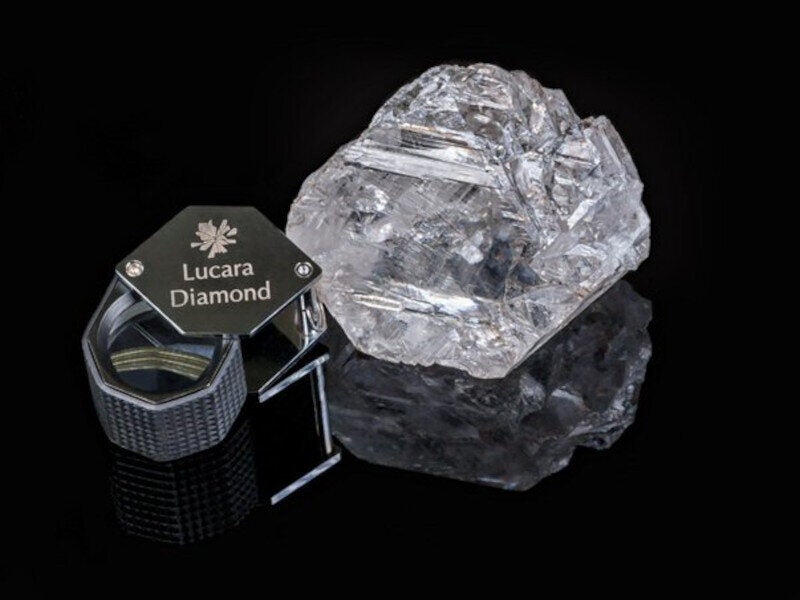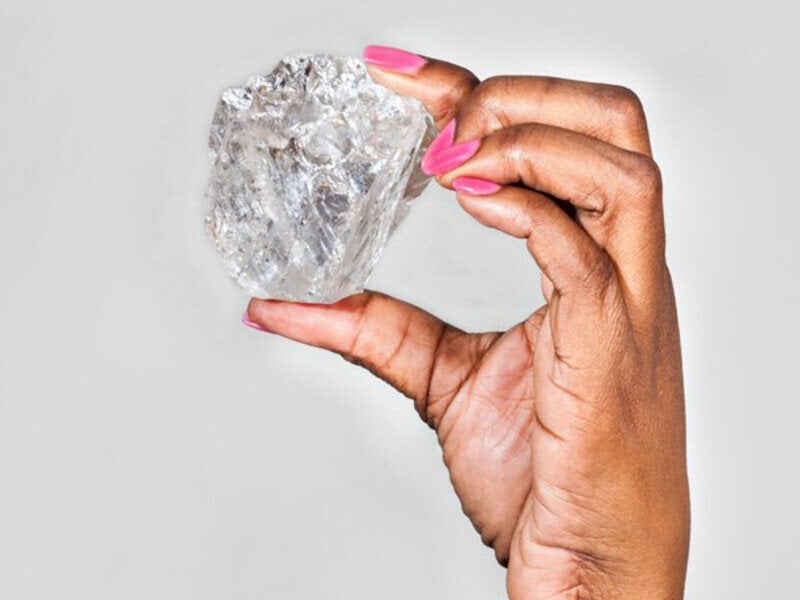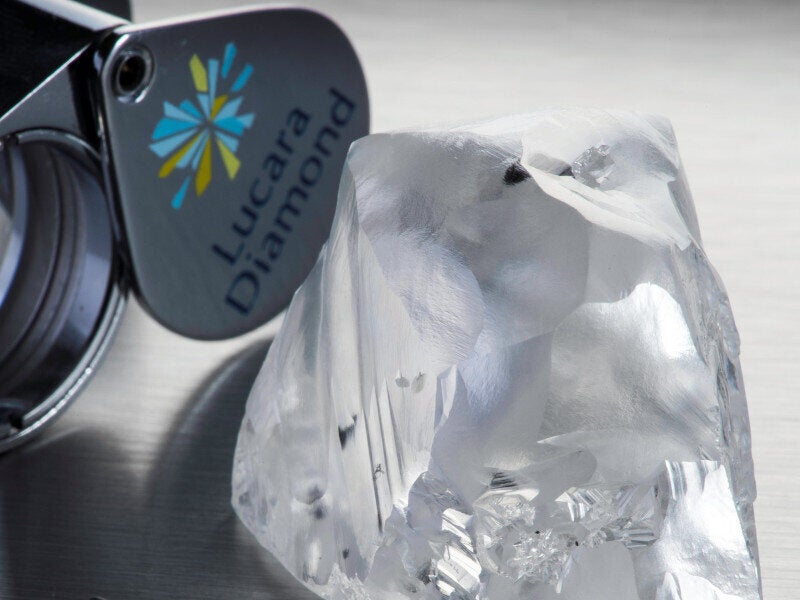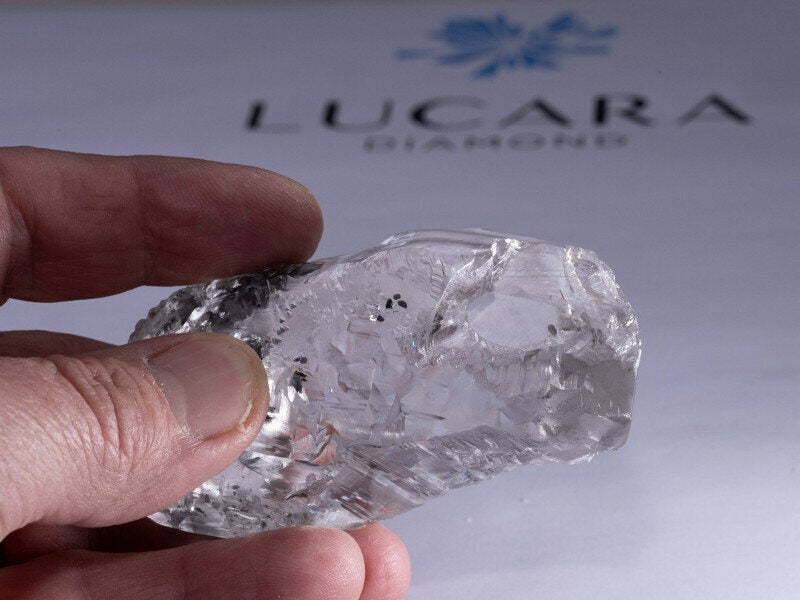The Karowe diamond mine (formerly the AK6 Project), a producer of high-quality rough diamonds, is located in the Orapa/Letlhakane Kimberlite district of north-central Botswana. The mine is being developed with an investment of approximately $226.1m.
The diamond mine is 100% owned by Lucara Diamond through its subsidiary Boteti Mining. The mine construction was completed in March 2012, while the commissioning works were completed in April.
The first sale of rough diamonds from the mine was achieved in June 2012 while commercial production started in July and full production capacity was reached in August the same year.
In September 2021, the underground expansion project at the Karowe Mine was approved. The mine is estimated to have a remaining production life of 15 years with in-situ open pit reserves expected to be depleted by 2025, after which mining operations are planned to be expanded underground.
In January 2024, Lucara Diamond reported the retrieval of a 166 carat diamond from the mine. The Type IIa gem was recovered in the Coarse XRT unit at Karowe through direct milling of ore from the M/PK(S) unit of the South Lobe.
Lucara Diamond also recovered a 1,080ct Type IIa diamond from the mine in August 2023, which marks the fourth diamond above 1,000ct to be recovered from Karowe.
Location
The Karowe Mine, situated in the central district of Botswana in South Africa, is 23km west of the Letlhakane diamond mine and 25km south of the Orapa diamond mine.
It spans approximately 1,523ha within Mining License 2008/6L, which covers a significant area in one of the world’s leading diamond-producing regions in north-central Botswana.
Geology and mineralisation
The kimberlite at the diamond mine, named AK6 kimberlite, is interpreted as an opaque, mineral-rich monticellite kimberlite and is primarily classified as a volcaniclastic kimberlite. It integrates three coalescing pipes, namely the South Lobe, the Center Lobe and the North Lobe, of which the South Lobe accounts for roughly 75% of the potential resources.
The kimberlite body has an area of 3.3ha at the surface and extends over approximately 7ha at a depth of 120m.
Reserves
The proven and probable mineral reserves at Karowe was estimated at 53.1 tonnes (t) as of December 2022.
Mining method
The open pit operations at the mine are conducted using conventional drill and blast mining method. The mining fleet consist of diesel excavators and trucks. The open-pit mining is scheduled to conclude in mid-2025 at an elevation of around 700m above sea level.
The Karowe underground mine will be developed as a block cave layout with an offset herringbone extraction level for flexible mucking and mud rush protection. The design will ensure coarse fragmentation if the Lobe caves naturally.
The underground mine will be accessed from a 765m deep production/service shaft, with a diameter of 7.5m. The shaft will be equipped with two 21t skips to hoist ore, a service cage for personnel and material movement, and a small auxiliary cage for personnel.
The shaft will also serve as the main ventilation shaft to the mine. A second 6m diameter shaft with a depth of 715m will be constructed and equipped with a heavy lift hoist for large equipment. It will also serve as the main exhaust route and secondary egress for the mine.
Ore processing
Run-of-mine (ROM) material is transported to the ROM-tip via articulated and non-articulated trucks. The initial crushing process is performed by a primary jaw crusher. Depending on the specific ore characteristics, either a portion or the entirety of the primary crushed ROM is directed through the secondary crushing circuit.
The secondary crusher product is combined with the undersize from the screen and bypassed material and reintroduced to the mill feed conveyor.
A wet flush tertiary crusher circuit treats tailings from the X-Ray Transmission (XRT) bulk sorters to release diamonds, which are reintroduced into the circuit via a bulk sorter sizing screen and allocated to the appropriate downstream process based on size.
The undersize mill screen product is further classified on the bulk sorter and XRT sizing screens while the oversize is directed to the large diamond recovery circuit XRT section before being processed through the pebble crusher circuit. A dense media separation (DMS) plant processes the 4mm x 1.25mm size fraction product and beneficiates diamondiferous concentrate from less heavy reject/gangue material.
The existing recovery plant processes the 5-6mm x 1.25mm size fraction from the DMS plant. The recovery plant houses wet x-ray machines, infrared drier and a dry reconcentration X-ray luminescence machine to further process the final product.
The combined coarse and middle bulk sorter tailings are fed to the scavenger audit XRT from where they are either diverted to the new XRT audit plant or discarded as final coarse tailings.
The cyclone overflow is directed to the thickener feed well, where flocculant is added to consolidate ultrafines for final disposal to the fine residue disposit via a pump train. The cyclone underflow is sent to a degrit screen for dewatering before disposal to the DMS floats coarse ore stockpile.
Infrastructure at the Karowe diamond mine
The project site can be accessed by a 15km stretch of gravel road from Letlhakane town. Additionally, there is a 1,480m by 18m, private airstrip at the site for light aircraft, primarily used for product shipments and occasional site visits.
Filtered and potable water is currently provided to the site from a centralised water treatment plant near the thickener.
The plant receives power from Botswana Power’s Letlhakane 400/220kV substation. A new 132kV transmission line, spanning 29km, will be built from the Letlhakane substation to a new substation on the mine premises with a capacity of 132/11kV.
Contractors involved with the Karowe diamond mine
The mining fleet is owned and operated by Kalcon, who is also responsible for the maintenance of the site’s access road, whereas the processing plant is operated by Minopex. The engineering, procurement, construction and management contractor for the processing plant was DRA Mineral Projects.
The environmental impact assessment report for the mine was compiled by Geoflux, whereas the latest mineral resource update was prepared by Mineral Services Canada.










